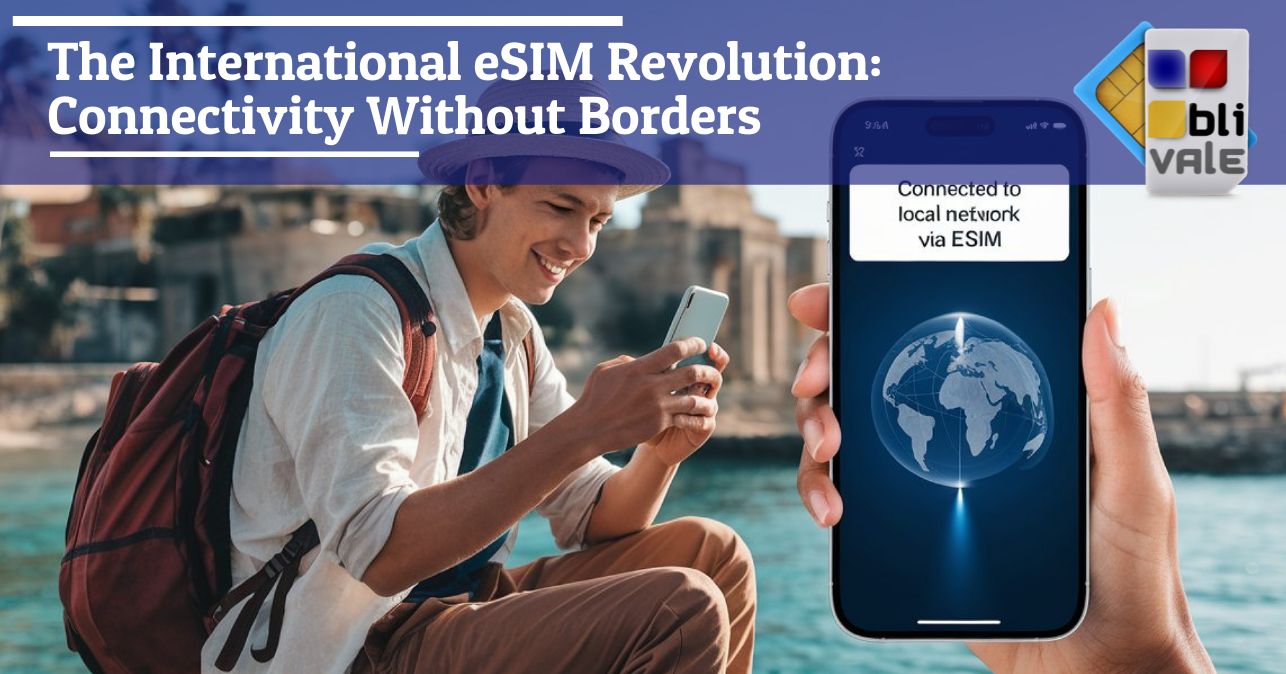In recent years, telecommunications technology has come a long way, bringing with it innovative solutions for mobile connectivity. One of the most exciting innovations is the eSIM, or embedded SIM, which has radically changed the way we connect to networks while traveling abroad. But what exactly are international eSIMs and how can they make life easier for travelers? In this article, we explore how eSIMs work, their benefits, and the challenges they face, with an eye on the future of this technology.
What is an International eSIM?
An international eSIM is a digital version of a traditional SIM card. Instead of being a physical piece of plastic that we insert into our device, the eSIM is integrated directly into the hardware of the device itself. This means that we do not need a physical SIM card to connect to a mobile network. Users can download digital profiles of local networks while traveling, allowing them to avoid the expensive roaming charges that often accompany international mobile phone plans.
The real strength of eSIM technology lies in its ability to store multiple network profiles. This allows users to change operators without having to physically replace the SIM card. For frequent travelers, this flexibility is essential; it allows you to choose the best network based on your current location, avoiding high costs and ensuring a stable connection.
How eSIM Works
eSIM technology works in a simple yet effective way. When a user wants to connect to a local mobile network while abroad, they can download an eSIM profile directly to their device. This process does not require any physical interaction, making the connection instant and effortless.
Additionally, users can manage their subscriptions through their device settings, selecting the plan that best suits their location and needs. This approach eliminates the hassle of having to search for a store to buy a new SIM card every time they move countries.
Benefits of Using an International eSIM
There are several benefits associated with using an international eSIM, making it a convenient choice for those who travel.
Economic Savings
One of the main benefits of eSIMs is cost savings. Traditionally, roaming charges can add up quickly, but with an eSIM, users can subscribe to local data plans that offer much cheaper rates. For example, costs per gigabyte can drop to less than $1, eliminating the high fees associated with international plans.
Convenience and Speed
eSIMs offer an unprecedented level of convenience. Users can activate a data plan in minutes, without having to physically visit a store or wait for a new SIM card to be shipped. This ease allows travelers to stay connected from the moment they arrive in a new country.
Reliable Connectivity
Another significant benefit of eSIM technology is the ability to seamlessly switch between local networks. Users can manually select their preferred network from a list of available options, ensuring seamless connectivity throughout the journey. This flexibility is crucial for those who depend on internet connectivity for work or to stay in touch with friends and family.
Simplified Management
With an international eSIM, users no longer have to manage multiple physical SIM cards. They can store different profiles on their device and easily switch between them as needed. This digital approach makes managing mobile connections abroad much easier.
If you are thinking of taking a trip alone or with friends or for work, do not forget the importance of staying connected wherever you are. For unlimited Internet connection, contact BLIVALE where you can get unlimited Internet according to the destinations:
For unlimited plans like data BLIVALE guarantees free roaming anywhere in the world, no additional or hidden costs. Don't let the lack of connection stop you; get ready to explore the world with freedom and spontaneity.
Comparison between eSIM and Traditional SIM
Traditional SIM cards have been the primary method of connecting mobile devices to cellular networks for years. However, they have some significant drawbacks, especially when it comes to international travel. Users often face challenges such as high roaming charges and the need to physically obtain a new SIM card every time they move countries.
In contrast, eSIMs offer an integrated setup that eliminates the need to physically manage a SIM card. Users can reprogram their eSIM almost instantly, switching carriers or data plans without the hassle of replacing a physical card. This flexibility is especially beneficial for frequent travelers.
The Challenges of International eSIMs
Despite all the benefits, international eSIM adoption also presents some challenges.
Activation Problems
One of the most common issues is with eSIM activation. Some users may encounter difficulties in activating profiles due to device compatibility issues or complex procedures. It is essential to check if your device supports eSIM technology before attempting to activate it. You can easily do this by visiting the BLIVALE website . At this link eSIM Supported Devices you will find an updated list of compatible devices. This will allow you to confirm whether your smartphone or tablet can use an eSIM, thus ensuring a seamless connectivity experience during your travels.
Security Matters
Security is another critical aspect to consider. Risks such as cyber attacks during over-the-air provisioning can pose a significant threat to users. It is always advisable to pay attention to the security of eSIM profiles to avoid unauthorized access.
Variable Regulations
Regulations regarding the use of eSIMs vary greatly from country to country. In some places, there are restrictions that may limit the functionality of eSIMs or require that data be managed on local servers. These regulatory complications can make it difficult to use eSIMs internationally.
The Future of eSIM Technology
Looking ahead, eSIM technology is expected to become increasingly dominant in the mobile connectivity landscape. By 2025, we could see a radical shift in the way we manage our mobile connections.
With the introduction of artificial intelligence in eSIM technologies, users could also benefit from automatic network switching based on optimal conditions of speed, cost and reliability. This would further improve the user experience, making the connection even more seamless.
Furthermore, as more and more operators adopt this technology, it will be possible to see increasingly innovative and personalized data plans. This potential represents a significant opportunity for service providers in the telecom industry.
Conclusion
In conclusion, the international eSIM represents a true revolution in the way we connect while we move around the world. With advantages such as cost savings, convenience in managing connections and flexibility in choosing the network, there is no doubt that this technology is changing the telecommunications landscape.
However, it is crucial to be aware of the challenges associated with its adoption, including activation issues and security concerns. As technology and regulation evolve, we can expect a future where eSIMs become the global standard for mobile connectivity.
If you are a frequent traveler or simply want to stay connected during your adventures abroad, consider getting an unlimited international eSIM from BLIVALE ; it could be the perfect solution for you!









